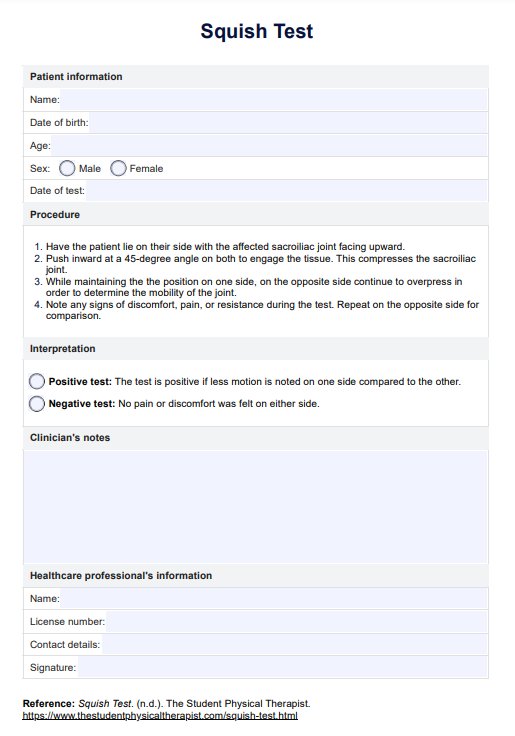To improve sacroiliac joint mobility, regular exercise that focuses on strengthening the core and pelvic muscles and stretching the lower back, hips, and pelvis can be effective. Physical therapy techniques such as manual manipulation or joint mobilization may also provide relief.

Squish Test
Discover how to assess and manage sacroiliac joint issues effectively with our comprehensive Squish Test guide. Download your free PDF today.
Squish Test Template
Commonly asked questions
The Flexion, Abduction, and External Rotation (FABER) test is best for assessing sacroiliac joint mobility. This test evaluates pain and discomfort in the sacroiliac joint as the leg is positioned to stress the joint in various directions.
With SI joint dysfunction, it's advisable to avoid movements that involve excessive twisting of the hips or lower back, heavy lifting that strains the lower back, and prolonged sitting or standing in asymmetrical positions, as these can exacerbate pain and stiffness.
EHR and practice management software
Get started for free
*No credit card required
Free
$0/usd
Unlimited clients
Telehealth
1GB of storage
Client portal text
Automated billing and online payments











